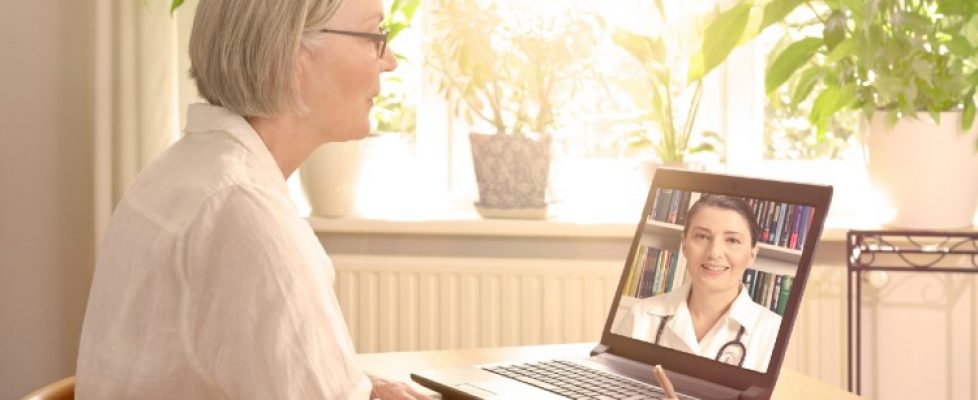NAHC Pushing for Palliative Care, SNF-at-Home Medicare Benefits
As home health and home care operators move toward the ninth month of the COVID-19 pandemic, it’s important to take stock of what has been accomplished from a policy perspective. Many of 2020’s regulatory changes will be fleeting, but others will shape the future of post-acute care for years to come.
That was the message delivered Monday by National Association for Home Care & Hospice (NAHC) President William A. Dombi during the nonprofit advocacy organization’s annual conference. In addition to providing a regulatory recap, Dombi hinted at new Medicare benefits on the horizon and explained how the value of home-based care is at an all-time high.
“There has been an increased awareness of the breadth and depth of care at home, and this will have a long-standing impact on policy and politics as well,” he said. “There has been an absolute, exponential increase in respect for what you do in the home care setting. We took the stresses of the pandemic head-on and proved that care in the home is not only essential but [the best option].”
During Monday’s Washington update, Dombi revealed that 67% of in-home care providers are serving COVID-19-positive patients.
To support them in delivering that care, providers have been able to lean on a variety of lifelines, including funds from the CARES Act Provider Relief Fund and the Paycheck Protection Program (PPP). Providers have also received essential-worker classification and greater telehealth flexibilities.
Additionally, the U.S. Centers for Medicare & Medicaid Services (CMS) has recognized that virtually the entire Medicare population meets homebound status requirements.
“When you’re Medicare eligible, over the age of 65 or on disability, and you need health care services, you have a compromised condition to put you at even greater risk of fatality,” Dombi said. “CMS agreed with our position on this and issued interpretive guidance indicating that individuals who need to leave the home for services, it is medically contraindicated, thereby meeting the homebound standard.”
During the public health emergency, CMS also paused claims audits and the Review Choice Demonstration (RCD), a regulatory initiative designed to reduce improper billing in home health care. That has since been restarted, with temporary administrative flexibilities.
COVID-19 testing, non-physician certification
At the end of September, the U.S. Department of Health & Human Services (HHS) announced that home health and hospice agencies would receive 10 million rapid COVID-19 tests from a federal inventory of about 150 million. Dombi likewise touted that as a win.
In the first week of distribution alone, he noted, about 160,000 tests were distributed to home health and hospice agencies.
“The fact that HHS recognized that home care was an essential part of health care services and made us part of that allocation in itself is a notable success,” Dombi said. “Just being recognized, not being considered some stepchild in health care.”
Among the other topics he touched on during his Washington update, NAHC’s president highlighted excitement around non-physician certification, something the home health industry had been working toward for years.
Senator Susan Collins (R-Maine) first introduced legislation that pushed for this change in 2007.
“We found ourselves in the middle of discussions, negotiations and advocacy with the CARES Act, and Senator Collins said, ‘I think this is our chance to get it done.’ [She] was able to convince the Senate that now is the time to allow non-physician practitioners to have equal status with physicians, to the extent that the state law allows it within the Medicare home health benefit,” Dombi said.
New Medicare benefits
Despite making major inroads across various fronts, there are still a number of measures that need to be taken.
For one, providers are still on the lookout for the next coronavirus-related stimulus package, which was originally expected before the July 4th Congressional recess, then again before the August recess.
“This is a back and forth that’s happening between the House and the Senate, between Republicans and Democrats,” Dombi said. “We’re still looking to see if we can have something before they go on recess in October, but we’re planning also for a lame-duck session on it.”
As far as what providers hoped to see in the next package, the list includes continued funding for the Provider Relief Fund, plus expanded funding for Medicaid home- and community-based services. The list also includes premium pay for front-line workers and litigation immunity.
Another area of focus for NAHC is palliative care. The organization is moving to get revisions in the Medicare coverage manual under home health care to fully recognize palliative care as one of the services provided as part of the existing benefit.
“We don’t think we need Congressional action to get there,” Dombi said. “Some of you — maybe many of you — are already doing things that would qualify as skilled palliative care under the benefit and getting Medicare to pay for it.”
Home health providers can also expect to see the 2021 payment rule finalized before the end of October or during the first few days of November. NAHC is calling on CMS to roll back the 4.36% behavioral adjustment in the Patient Driven Groupings Model (PDGM) ahead of the announcement of the final rule.
“It’s not just because we are in this unprecedented year of COVID-19,” Dombi said. “CMS projected a decrease in [Low Utilization Payment Adjustments], as they thought home health agencies would try to maximize 30-day episodic reimbursement. We have seen just the opposite of that, partially influenced, of course, by COVID-19.”
Additionally, NAHC is pushing for the creation of a new benefit that will allow for a skilled nursing facility (SNF) level of care at home.
“We have designed a [SNF-at-home] benefit to give individuals on the Medicare program the option of going home with expanded services,” Dombi said. “We think the design will work to be a win for the Medicare program as well. It’s been proven that you can provide less costly and high-quality care at home.”

